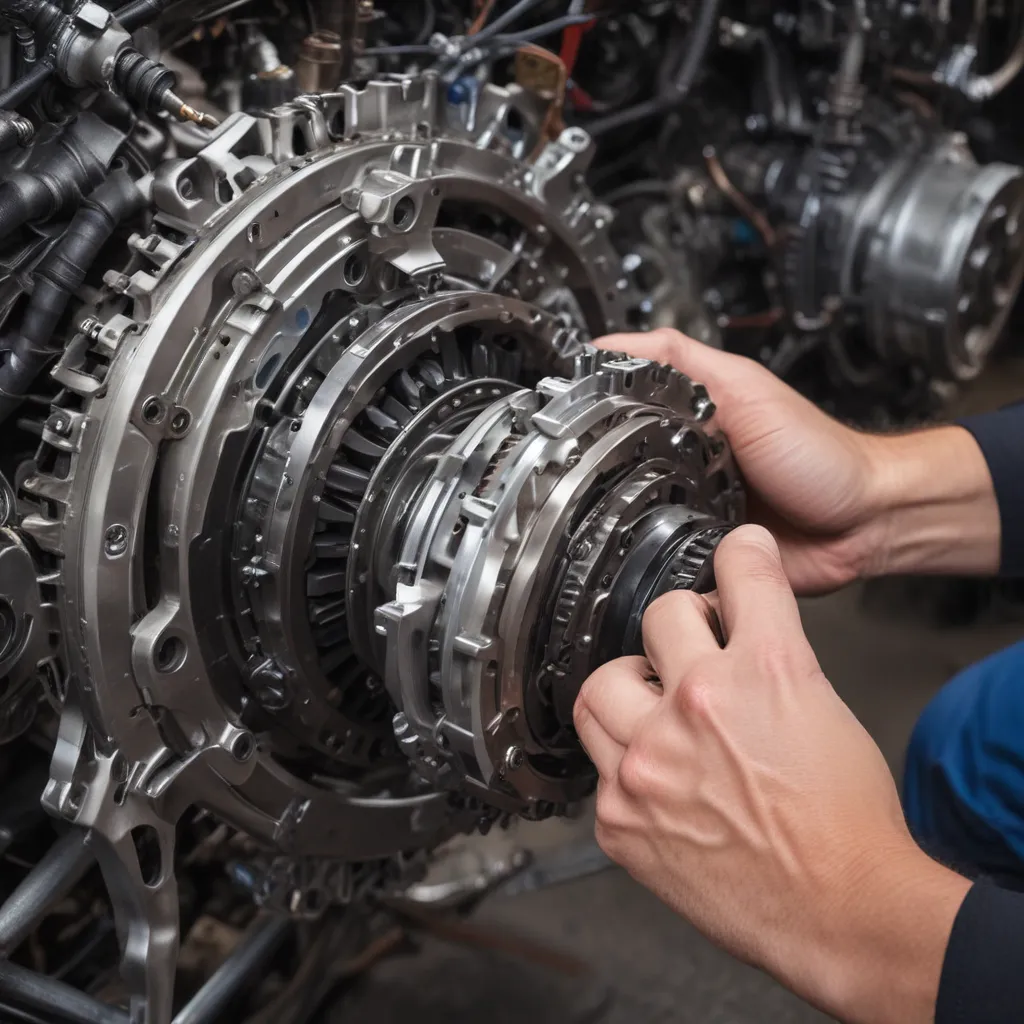
The Dreaded Transmission Trouble
Ah, the transmission – that mysterious component of our trusty vehicles that can strike fear into the hearts of even the most seasoned drivers. As the proud owner of an RV or fleet vehicle, I’ve seen my fair share of transmission woes, and let me tell you, it’s not a pretty sight. One minute you’re cruising down the highway, enjoying the open road, and the next, your vehicle is sputtering and groaning, refusing to shift gears like it used to.
But fear not, my friends! I’m here to guide you through the dark and treacherous waters of transmission and drivetrain problems. As the owner of Orange County RV Repair, I’ve spent countless hours getting my hands dirty, solving these tricky issues for my customers. And let me tell you, it’s not as daunting as it might seem.
Understanding the Anatomy of the Transmission
Before we dive into the nitty-gritty of transmission problems, it’s important to have a basic understanding of how this complex system works. The transmission is essentially the heart of your vehicle’s drivetrain, responsible for transmitting the engine’s power to the wheels. It’s a intricate dance of gears, clutches, and hydraulic fluid, all working in harmony to ensure your vehicle can accelerate, decelerate, and maintain a steady speed.
Now, I know what you’re thinking – “Gears and clutches and hydraulic fluid? That sounds like a recipe for disaster!” And you’re not wrong. The transmission is a delicate piece of machinery, and when something goes wrong, it can quickly turn into a costly and frustrating ordeal.
Common Transmission Problems and Their Causes
One of the most common issues we see at the shop is a transmission that’s slipping or refusing to shift properly. This can be caused by a variety of factors, from low fluid levels to worn-out clutches or gears. In some cases, it might even be a problem with the transmission’s electronic control system.
Another common problem is a transmission that’s leaking fluid. This can lead to all sorts of issues, from poor performance to complete transmission failure. The culprit could be a worn-out seal, a crack in the transmission housing, or even a problem with the cooling system.
And let’s not forget about the dreaded “transmission shudder” – that uncomfortable jerking or vibrating sensation you feel when your vehicle is trying to shift gears. This can be caused by a variety of issues, from worn-out components to problems with the torque converter.
Diagnosing and Repairing Transmission Problems
Now, I know what you’re thinking – “Okay, so I’ve got a transmission problem, but how do I fix it?” Well, my friends, that’s where the real magic happens.
As an experienced technician, the first step in solving any transmission issue is to conduct a thorough diagnosis. This involves everything from checking fluid levels and inspecting for leaks to running diagnostic tests and analyzing the transmission’s performance under various driving conditions.
Once we’ve identified the root cause of the problem, it’s time to get to work. Depending on the issue, this could involve something as simple as a fluid change or as complex as a full transmission rebuild. And let me tell you, a transmission rebuild is no easy feat. It’s a delicate and intricate process that requires a keen eye, a steady hand, and a deep understanding of how these systems work.
Preventing Transmission Troubles: Maintenance and Care
Of course, the best way to deal with transmission problems is to avoid them in the first place. And that’s where proper maintenance and care come in.
One of the most important things you can do to keep your transmission in tip-top shape is to regularly check and change the fluid. Over time, the fluid can break down and become contaminated, leading to all sorts of issues. It’s recommended to change the fluid every 30,000 to 60,000 miles, depending on your vehicle and driving conditions.
But it’s not just the fluid that needs attention. The transmission’s other components, such as the clutches, gears, and seals, also need to be inspected and maintained on a regular basis. This might involve things like adjusting the shift linkage, replacing worn-out parts, or even addressing issues with the vehicle’s overall drivetrain.
Navigating the Transmission Repair Process
Now, I know what you’re thinking – “Okay, so I’ve got a transmission problem, and I need to get it fixed. But where do I even start?”
Well, my friends, that’s where the team at Orange County RV Repair comes in. We’ve been helping drivers just like you for years, and we know the ins and outs of the transmission repair process.
The first step is to bring your vehicle in for a comprehensive diagnosis. Our team of experienced technicians will use the latest diagnostic equipment to identify the root cause of the problem, and then we’ll work with you to develop a plan of action.
From there, it’s all about getting the job done right. Whether you need a simple fluid change or a complete transmission rebuild, we’ve got the skills and the expertise to get the job done quickly and efficiently. And, of course, we’ll always keep you in the loop every step of the way, so you know exactly what’s going on with your vehicle.
Conclusion: Conquering Transmission Troubles with Confidence
So, there you have it, my friends – the ins and outs of solving transmission and drivetrain problems. It might seem like a daunting task, but with the right knowledge, the right tools, and the right team on your side, it’s a problem that can be tackled with confidence.
At Orange County RV Repair, we’re always here to help, whether you’re dealing with a slipping transmission, a fluid leak, or a mysterious shudder. So, don’t let those transmission troubles get you down – give us a call, and let’s get your vehicle back on the road where it belongs.
